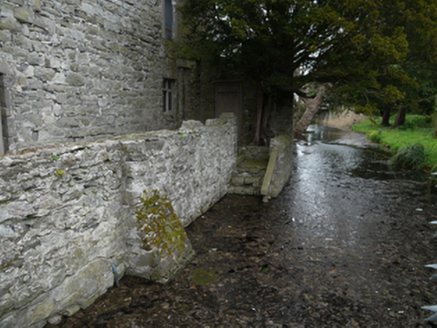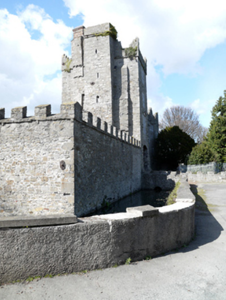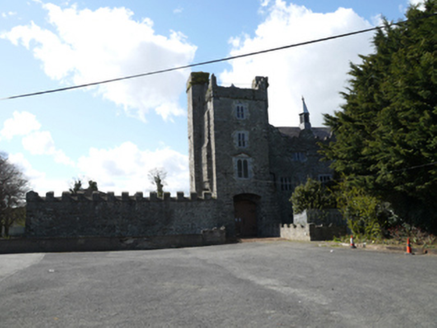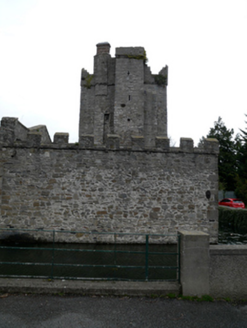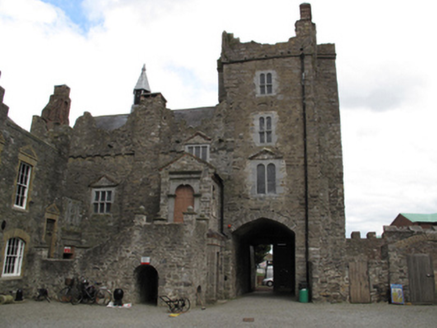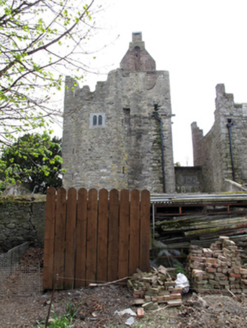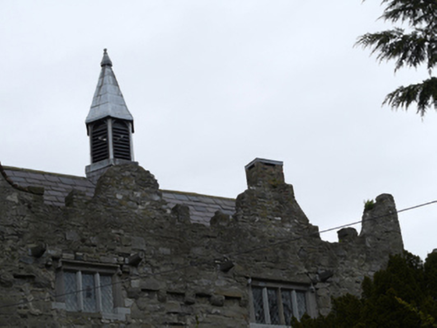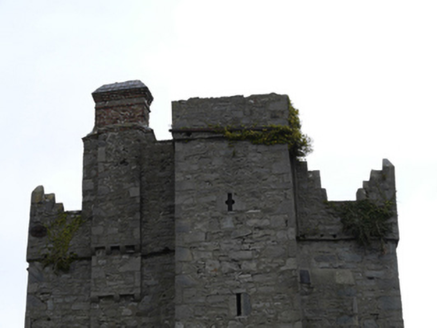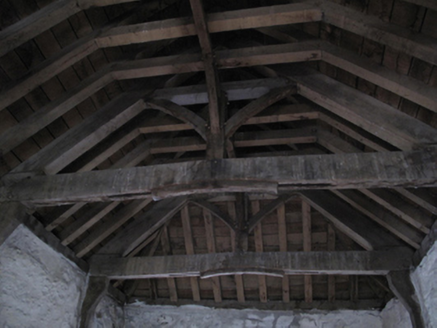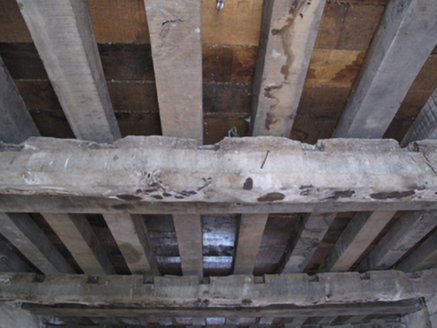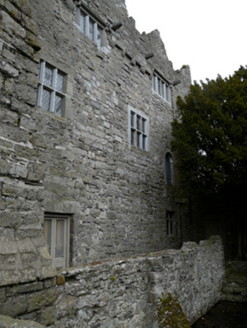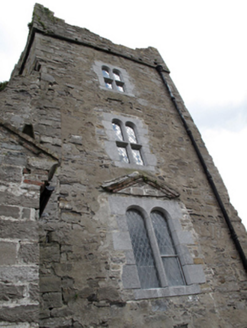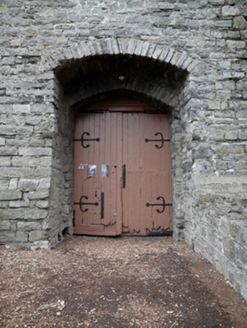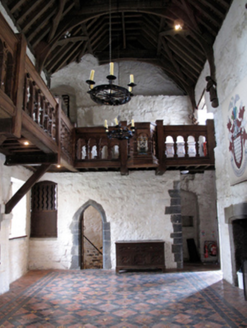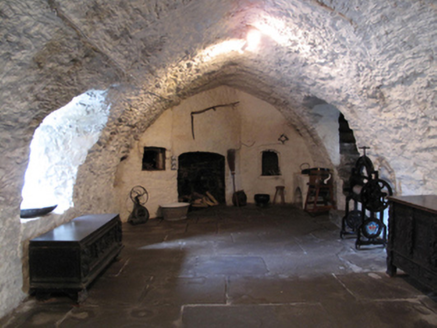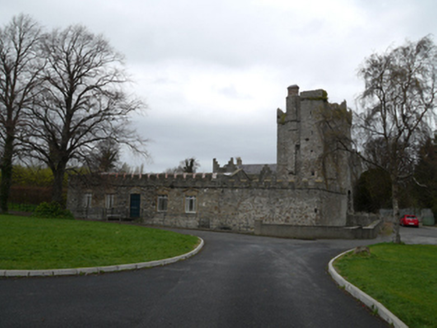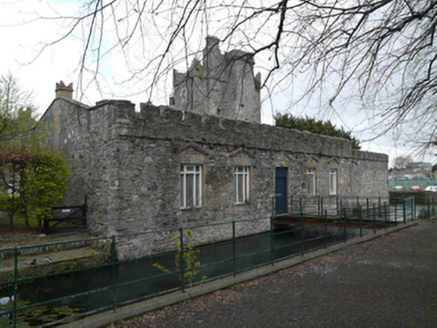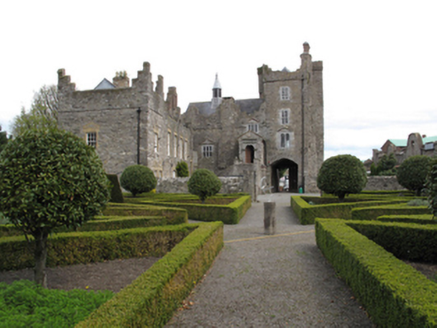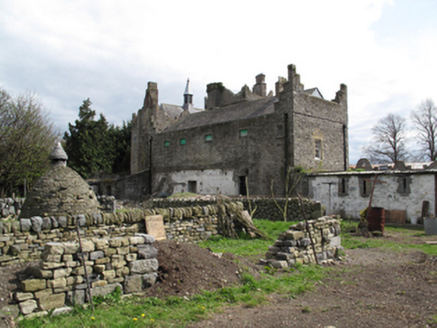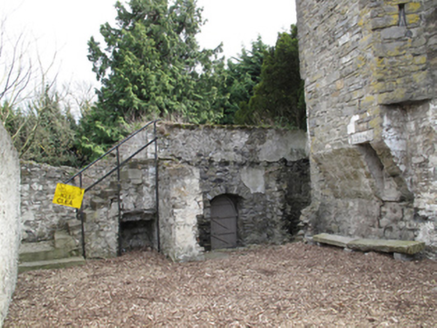Survey Data
Reg No
50080451
Rating
National
Categories of Special Interest
Archaeological, Architectural, Historical, Technical
Original Use
Castle/fortified house
In Use As
Museum/gallery
Date
1350 - 1450
Coordinates
311150, 231796
Date Recorded
02/05/2013
Date Updated
--/--/--
Description
Freestanding rectangular-plan multiple-bay three-storey castle, built c.1400, consisting of undercroft, great hall and gallery, with square-plan four-stage sixteenth century keep to south. Site enclosed by moat. Partly rebuilt and renovated c.1985. Replacement oak truss pitched slate roof over Great Hall, hipped to north, having shaped stone parapet, fumerelle and brick chimney to north gable. Replacement hipped slate roof over tower, having castellated parapet with stone battlements and brick chimney to south elevation. Billeted stone moulding to base of parapet of main block. Cut stone string course to tower. Reconstructed window openings to main block and tower, featuring cut limestone surrounds, having replacement cut and carved tracery and leaded glass. Square-headed openings to great hall, east and west elevations, openings to east having brick pediment. Paired round-headed lancet windows to tower, east and west elevations, lower pair having brick pediment. Loop windows to tower, south elevation. Entrance to inner courtyard via integral arch through tower. Lowered pointed arch entrance opening to undercroft having limestone voussoirs and replacement timber door. First floor gabled stone entrance porch and steps built c.1780 allowing access from courtyard to great hall. Fourteenth-century undercroft having vaulted ceiling with remains of wicker centering, embrasure windows, sixteenth-century hearth, smoker and bain marie. Stone staircases to south and north-east allow access to great hall, having seventeenth-century hearth and reconstructed oak truss roof and gallery. Sixteenth-century tower features lookout turrets to the south and west.
Appraisal
Drimnagh Castle was occupied to 1954, making it one of the oldest occupied buildings in the country. It is also one of very few medieval structures to still have its enclosing moat. Its current form results from multi-period construction, begun by the acquisition of the lands by Hugh De Berneval in 1215. The earlier works including the undercroft, and the tower built by the Loftus family in the seventeenth century, are typical of the need for defence at the time, while the later works such as the entrance bridge and walled garden are a physical reminder of the increased peace and prosperity of the country in the eighteenth century. As Dublin city expanded, the castle became part of the new suburbs of Drimnagh and Walkinstown, providing an interesting contrast to the twentieth-century school built on the grounds c.1960, and a notable reminder of Drimnagh's rural and historical past. Extensively renovated by a local community project, the castle nonetheless retains much significant early fabric. (http://www.drimnaghcastle.org/)
